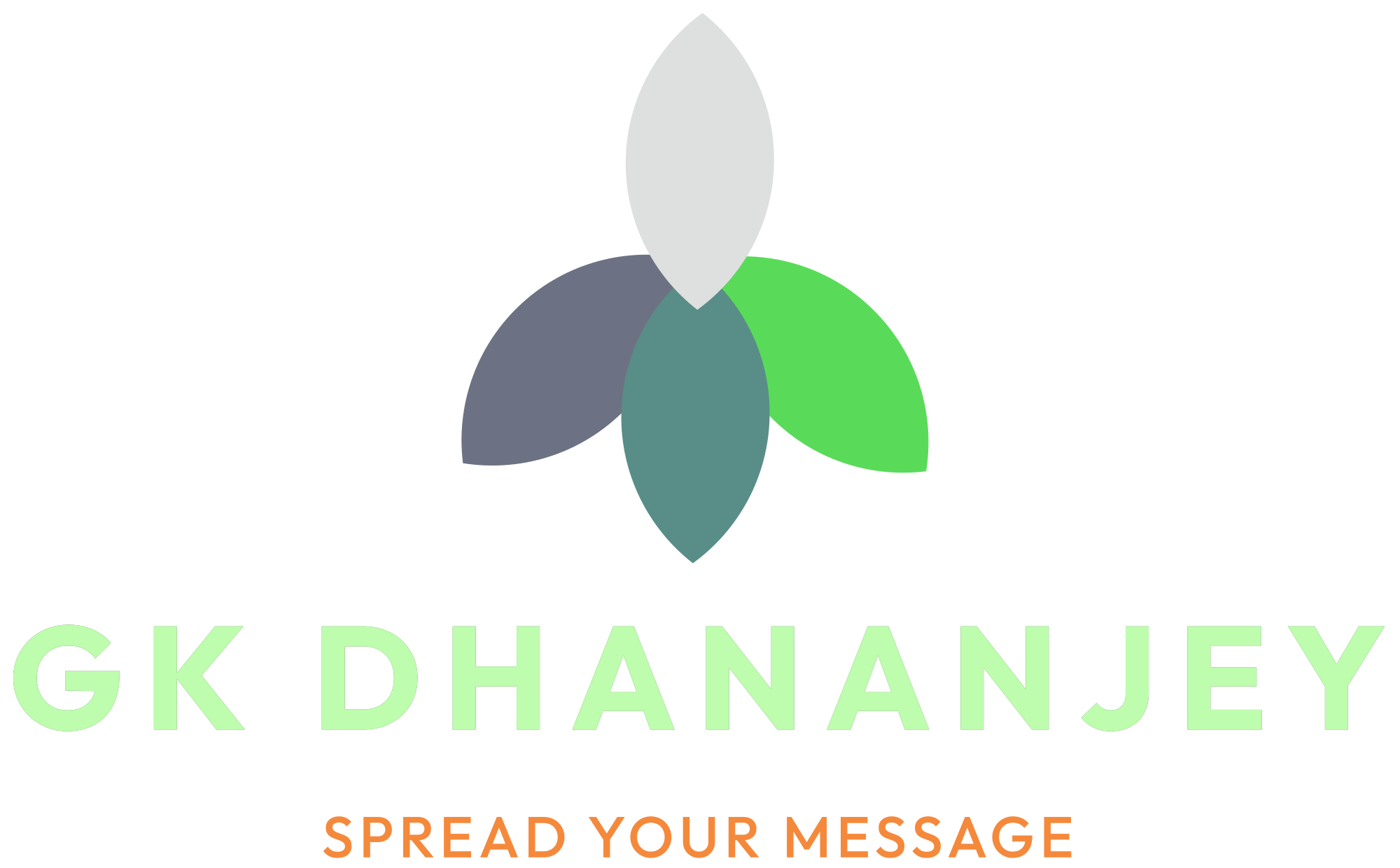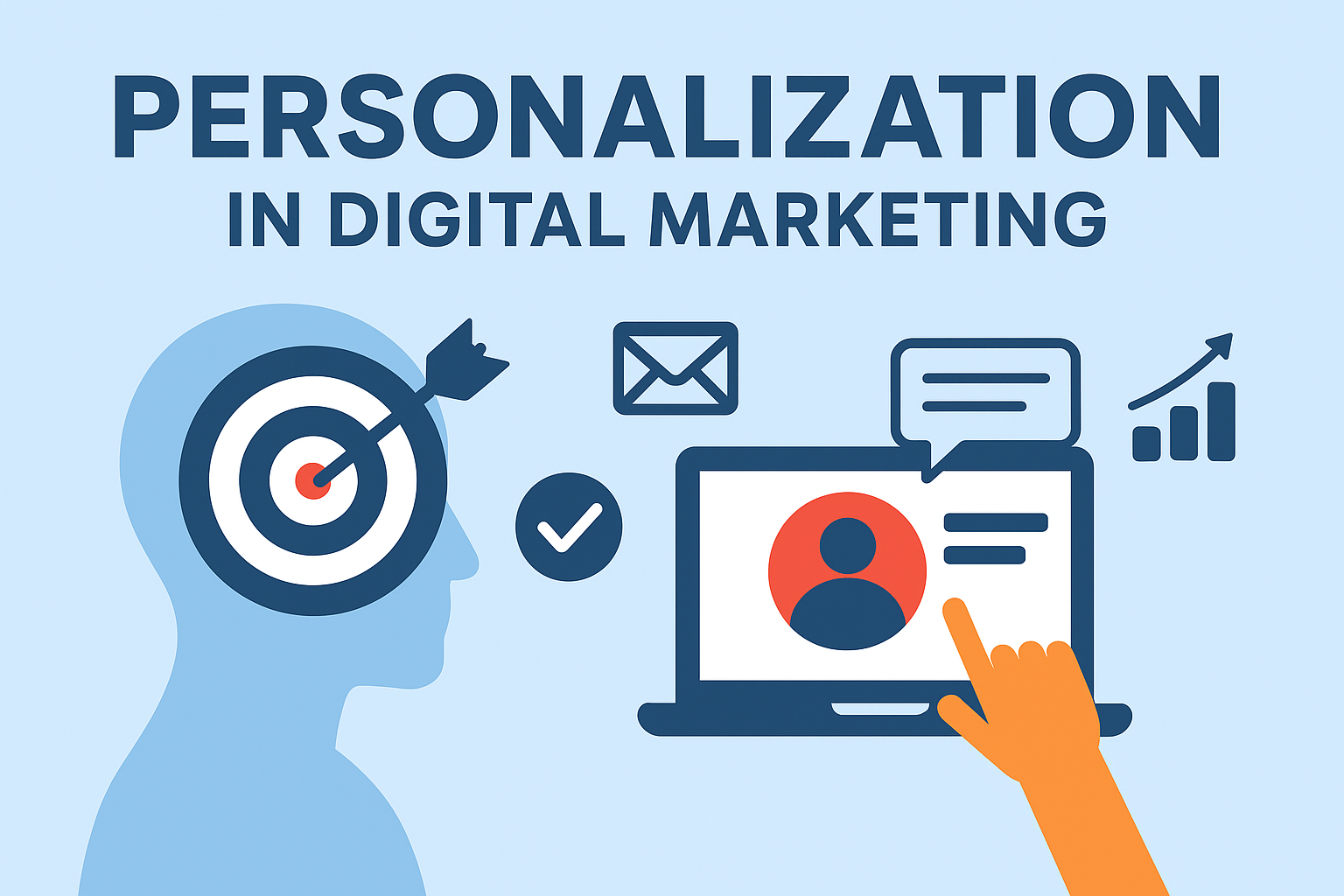Contents
- 1 Introduction
- 2 The Evolution of Digital Marketing Personalization
- 3 Why Personalization is the Future of Digital Marketing
- 4 7 Ways Personalization is Transforming Digital Marketing in 2025
- 5 Challenges of Personalization in Digital Marketing
- 6 How Small Businesses Can Implement Personalization
- 7 The Future of Personalization in Digital Marketing
- 8 Conclusion
Introduction
Personalization in Digital marketing has transformed the way businesses interact with their customers. With the rise of social media, search engines, and advanced analytics, companies now have more tools than ever to connect with their audiences. But in 2025, simply reaching customers isn’t enough — relevance is everything.
That’s where personalization in digital marketing comes in. Today’s consumers expect brands to not just communicate with them, but to understand them. They want recommendations that make sense, emails that feel tailored, and ads that align with their interests rather than bombard them with generic offers.
In fact, research shows that businesses using personalization strategies see significant improvements in engagement, customer satisfaction, and ROI. Personalized campaigns can generate five to eight times the return of non-personalized efforts. The shift is so powerful that personalization has moved from being a marketing “add-on” to becoming the backbone of modern digital strategies.
In this blog, we’ll take a deep dive into why personalization in digital marketing is no longer optional, how it has evolved, the top ways it’s transforming customer engagement, and what the future holds. Whether you’re a small business owner or a marketing professional, understanding personalization is the key to staying competitive in today’s crowded digital world.
The Evolution of Digital Marketing Personalization
Not long ago, personalization meant adding a customer’s first name to an email subject line. That tactic worked for a while, but customers quickly grew used to it. As expectations increased, so did the need for deeper personalization strategies.
The rise of data collection tools, machine learning, and customer data platforms completely changed the game. Brands began tracking customer behavior, purchase history, browsing patterns, and even social media activity to create highly personalized experiences.
- Early 2000s: Marketing was largely broadcast-based. Brands pushed the same message to everyone.
- 2010–2015: The rise of segmentation and A/B testing allowed marketers to tailor messages to specific demographics.
- 2016–2020: AI and predictive analytics entered the picture, enabling brands to forecast customer needs before they were expressed.
- 2021 onwards: Hyper-personalization became the standard, with real-time data fueling dynamic, one-to-one marketing experiences.
Today, customers don’t just prefer personalization — they expect it. Surveys reveal that more than 70% of consumers feel frustrated when content isn’t relevant to them. This proves that personalization in digital marketing has evolved from a “nice-to-have” into a business necessity.
Why Personalization is the Future of Digital Marketing
Personalization goes beyond making marketing messages feel personal — it fundamentally changes how customers interact with brands. Here’s why it’s the future:
- Increased Engagement: People are more likely to click, read, and buy when the content feels relevant. Personalized emails, for example, see higher open and click-through rates.
- Customer Loyalty: When customers feel understood, they stick around. Personalization builds emotional connections, which turn into long-term loyalty.
- Improved ROI: Personalized campaigns ensure that marketing dollars are spent efficiently. Instead of casting a wide net, businesses target those most likely to convert.
- Competitive Advantage: In a world where most businesses are online, personalization is the differentiator. Brands that do it well stand out.
Personalization is no longer just about better marketing; it’s about delivering better experiences.
7 Ways Personalization is Transforming Digital Marketing in 2025
1. Personalized Email Campaigns
Emails remain one of the most effective channels in digital marketing, but only when done right. Generic newsletters rarely perform well. Instead, brands are using segmentation and behavior-based triggers to send emails that align with individual preferences.
For example:
- An online retailer might send a discount on items left in a cart.
- A travel agency might recommend destinations based on previous bookings.
- Music streaming services create playlists tailored to each listener’s habits.
The more personal and relevant the email, the higher the engagement.
2. Dynamic Website Experiences
Websites are no longer static. Brands are investing in dynamic content that changes based on the user. For instance:
- A new visitor may see general brand information.
- A returning customer might see product recommendations based on past browsing.
- Location-based personalization can show users offers in their city.
This kind of customization makes websites feel like they are built specifically for each visitor.
3. AI-Powered Product Recommendations
Artificial intelligence is the backbone of personalization today. Online shopping platforms and streaming services are excellent examples. These platforms use machine learning to analyze behavior and suggest products or content that are highly relevant.
AI ensures that personalization scales — whether you’re serving 100 customers or 100 million.
4. Personalized Advertising and Retargeting
Ever noticed an ad for something you viewed just yesterday? That’s personalization in action. Retargeting ads remind users of products they’ve shown interest in, often leading to higher conversions.
Even beyond retargeting, AI allows advertisers to craft ads that match user intent and behavior, making them more effective than traditional campaigns.
5. Voice and Conversational Personalization
Voice assistants and chatbots are changing how people interact with brands. As voice search grows, businesses are using conversational AI to deliver personalized responses.
For example:
- A user asking about “nearby restaurants” might get suggestions based on cuisine preferences and past searches.
- Chatbots adapt conversations to user behavior, providing personalized assistance in real time.
6. Customer Data Platforms (CDPs)
Customer data platforms gather customer data across multiple channels (social media, email, web, in-store) and unify it into one profile. This allows brands to deliver consistent personalization across all touchpoints.
Instead of treating customers as anonymous users on different platforms, CDPs allow businesses to recognize them as one individual and serve them accordingly.
7. Hyper-Personalized Content and Video Marketing
Video is already the most engaging content format online. Now, personalization is taking it to the next level. Imagine receiving a video ad that highlights products you recently viewed, or adapts its script to your preferences.
Companies experimenting with personalized video campaigns are already seeing outstanding results. Expect this trend to explode in the coming years.
Challenges of Personalization in Digital Marketing
While personalization in digital marketing offers countless benefits, it also comes with challenges.
- Data Privacy Concerns
Customers are more aware than ever about how their data is used. Brands must balance personalization with transparency and ethical practices. Regulations like GDPR and CCPA require strict compliance. - Avoiding “Creepy” Marketing
There’s a fine line between useful personalization and invasive marketing. For example, suggesting a product a user viewed is fine, but referencing sensitive browsing habits feels uncomfortable. - Data Silos
Many companies struggle with fragmented customer data spread across platforms. Without integration, personalization suffers. - Technology Investment
Advanced personalization often requires tools, AI platforms, and analytics that can be costly for small businesses.
Still, these challenges don’t diminish the importance of personalization in digital marketing — they simply mean businesses must be thoughtful and strategic.
How Small Businesses Can Implement Personalization
Personalization in digital marketing isn’t just for big brands. Small businesses can benefit too. Here are some practical, affordable steps:
- Segment Your Email List – Even dividing customers by demographics or past purchases can make emails more effective.
- Use Simple Personalization Tools – Platforms like Mailchimp, HubSpot, or Shopify offer built-in personalization features.
- Leverage Social Media Insights – Tailor posts based on audience interactions and preferences.
- Retargeting Ads – Affordable options exist on platforms like Facebook and Google.
- Personalized Website Banners – Show different offers to new visitors vs. returning ones.
These steps don’t require massive budgets, but they do make customers feel valued and understood.
The Future of Personalization in Digital Marketing
The next five years will see personalization in digital marketing reach new heights. Here are some predictions:
- AI + AR/VR Integration: Imagine personalized virtual shopping experiences where stores adapt to your tastes.
- Predictive Personalization: AI will not just respond to behavior but anticipate needs before customers express them.
- Cross-Channel Consistency: Personalization will seamlessly follow customers from mobile apps to websites to physical stores.
- Ethical Personalization: Transparency will become a selling point, with brands proudly showing how data is used responsibly.
Ultimately, personalization will become so advanced that generic marketing will feel outdated.
Conclusion
In today’s noisy digital landscape, personalization is the key to cutting through the clutter. From email campaigns and dynamic websites to AI-powered recommendations and conversational chatbots, personalization in digital marketing is transforming how brands connect with their audiences. According to a recent blog in Adobe, businesses that use personalization in their digital marketing campaigns see up to a 20% increase in sales opportunities. This proves that personalization isn’t just a trend—it’s a measurable driver of ROI.
The message is clear: customers no longer want to be part of a crowd. They want to be seen, understood, and valued as individuals. Businesses that embrace personalization will thrive, while those that ignore it risk being forgotten.
The future of marketing isn’t about speaking louder — it’s about speaking directly to the right person at the right time. And personalization is how you get there.
if you as readers have any doubts please contact me here

